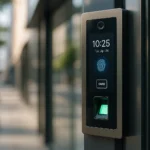In our fast-paced world, where real estate stands as a cornerstone of both personal and professional environments, efficiency and foresight have never been more critical. As building managers, we’re constantly inundated with responsibilities, from equipment upkeep to ensuring property aesthetics. Enter predictive maintenance: a game-changer that not only optimizes performance but also minimizes costs. This isn’t just another trend—it’s a transformative approach that empowers us to predict, prevent, and perfect our operations. Welcome to the future of real estate management.
Understanding Predictive Maintenance: Beyond the Basics
Predictive maintenance is revolutionizing how we manage our assets. Unlike traditional methods that rely on reactive fixes or scheduled upkeep, predictive maintenance leverages real-time data to anticipate problems before they manifest. By using IoT sensors, advanced software, and robust data management systems, we can monitor the performance of our equipment in real time, providing insights that drive more informed decision-making.
A New Era of Property Management
Gone are the days when building managers had to guesswork their way through maintenance schedules. With predictive maintenance, we’re armed with a crystal ball of sorts, enabling us to foresee potential issues and address them proactively. This approach not only saves on repair costs but extends the lifespan of our assets, ensuring that our real estate properties remain in tip-top shape.
Tools and Technologies
- IoT Sensors: These sensors are the eyes and ears of our systems, constantly collecting data on everything from temperature to vibration levels of machinery.
- Advanced Software: Platforms powered by AI and machine learning help us analyze data, offering actionable insights that keep our operations running smoothly.
- Real-Time Data: With immediate access to real-time information, we can make decisions that are as accurate as they are timely.
Benefits Beyond Cost-Savings
Predictive maintenance isn’t just about cutting costs; it’s about enhancing the overall occupant experience. By ensuring that HVAC systems run efficiently or that elevators operate without a hitch, we contribute to the comfort and satisfaction of residents and tenants alike. This level of management not only protects our investments but elevates the value of our properties.
Implementing Predictive Maintenance Strategies
Transitioning to a predictive maintenance model might seem daunting, but the payoff is well worth the initial investment. It’s not just about adopting new tools; it’s about ushering in a new mindset—one that prizes foresight over hindsight.
Laying the Groundwork
To successfully implement predictive maintenance, we must start with a comprehensive audit of our current systems. This involves:
- Identifying Key Assets: What’s vital to our operations? From heating systems to elevators, pinpointing critical components helps us prioritize where to focus our efforts.
- Evaluating Existing Infrastructure: Are our systems compatible with new technologies? Understanding our starting point is crucial to successful integration.
Leveraging Technology
Once we understand our landscape, it’s time to integrate the necessary technologies:
- Software Integration: Choose software that seamlessly integrates with our current systems, allowing for smooth data communication.
- Training Staff: Familiarize our teams with these new tools, ensuring they’re equipped to use them effectively. Training is an investment that yields high returns in efficiency.
Monitoring and Adjusting
Integration is not the end—it’s the beginning of continuous improvement. By monitoring real-time data and adjusting our strategies based on insights, we ensure that our predictive maintenance efforts remain as effective as possible.

The Role of Data in Predictive Maintenance
Data is the lifeblood of predictive maintenance. It fuels our ability to accurately predict when and why equipment might fail, allowing us to intervene before a problem escalates. But how do we harness this power effectively?
From Raw Data to Actionable Insights
The journey from raw data to actionable insights begins with collection. Sensors scattered across our properties gather performance metrics, including energy consumption, temperature variations, and usage patterns. These metrics are transmitted to central systems where they’re analyzed and transformed into insights.
Real-World Applications
Consider the impact on a high-rise building’s HVAC system. By monitoring real-time data, we can predict when filters need changing or when systems are under strain, preventing costly downtime or repairs.
Balancing Data Privacy with Utility
While data is invaluable, it’s crucial we handle it responsibly. Balancing data collection with privacy concerns is essential. We must ensure compliance with regulations while leveraging the data to enhance our maintenance strategies.
Continuous Learning
It’s important to remember that data is not static. As we gather more information, our systems become smarter, learning and adapting to optimize efficiency continuously. This iterative process ensures our buildings operate at peak performance, contributing to long-term success.
As we look to the future, it’s clear that predictive maintenance will play a pivotal role in shaping the real estate landscape. As building managers and property owners, we have the opportunity to embrace these advancements, transforming our approach to maintenance and management.
By leveraging cutting-edge technology and harnessing the power of real-time data, we’re not just reacting to problems—we’re predicting and preventing them. This shift from reactive to proactive maintenance empowers us to provide exceptional service, protect our assets, and ultimately, enhance the value of our investments.
In this era of rapid technological advancements, the question is not whether we should adopt predictive maintenance, but how quickly we can implement it to secure a competitive edge. The future is here, and it’s predictive.
FAQ
What exactly is predictive maintenance in the context of real estate?
Predictive maintenance in real estate involves using data analytics and sensors to anticipate and address potential equipment failures or building issues before they occur. This proactive approach helps in maintaining building systems efficiently, minimizing unexpected breakdowns.
How does predictive maintenance benefit real estate owners and managers?
Real estate owners and managers benefit from predictive maintenance by reducing operational costs, extending the lifespan of building equipment, and minimizing downtime. It also enhances tenant satisfaction by ensuring consistent building performance and safety.
What technologies are commonly used in predictive maintenance for real estate?
Technologies such as IoT (Internet of Things) sensors, data analytics platforms, and machine learning algorithms are commonly used. These tools collect and analyze data from building systems to predict when maintenance should be performed.
Can predictive maintenance contribute to sustainability efforts in real estate?
Yes, predictive maintenance can play a significant role in sustainability by optimizing energy usage, reducing waste, and prolonging the life of building systems. This contributes to more efficient resource use and a smaller carbon footprint.
What types of building systems can benefit from predictive maintenance?
Various systems within a building can benefit, including HVAC systems, elevators, electrical systems, and plumbing. Predictive maintenance can be applied to any system where data can be collected and analyzed for performance trends.



